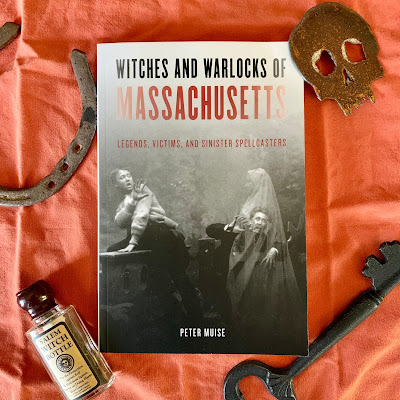I hadn't heard about the headless giants of Maine until I read Christopher Packard's Mythical Creatures of Maine, which was recently published by Down East Books. Mythical Creatures is a handsome little hardcover book, with full-color illustrations, that describes dozens of strange and wonderful creatures from Maine folklore. The publisher sent me a copy to review, but it was too late - I had already bought a copy for myself.
Some of the creatures described in this book will definitely be familiar to you, like mermaids (seen in Casco Bay in 1639) and Bigfoot (seen since at least the 1950s, and probably much earlier). Others might be moderately familiar, like the loup-garou, the French-Canadian werewolf, or the Turner Beast, aka the Maine mutant, a strange dog-like animal that was hit by a car in 2006. And some will be downright obscure, like the dungavenhooter, a mouthless crocodile that appeared in tall tales told by lumberjacks. Or those headless giants that roam around at night.
Packard includes quite a few creatures from the tall tales of lumberjacks and other woodsmen. These are creatures like the aforementioned dungavenhooter or the wamfahoofus, a one-armed monster that lurks in muddy puddles and likes to eat boots. I don't know if anyone really ever believed in these "fearsome critters of the lumber woods," and they may just have been jokey explanations for things like losing your boot in a big mud puddle. Still, they're interesting to read about.
Packard's book is arranged like an encyclopedia or dictionary, with entries for the different creatures listed in alphabetical order, and it's fun to browse through descriptions of creature like the Ice Hornet or Will-O-The-Wisp. But Mythical Creatures also explains which cultures these creatures originated from, like the indigenous Wabanaki tribes, the French, and the English. (Note: legends about the headless giants come from the Maliseet, a Native American tribe found in Maine and New Brunswick).
An appendix at the end of the book gives a brief but helpful overview of Wabanaki languages and culture, topics probably new to some readers, and Packard describes many creatures and beings from Wabanaki mythology in the book, including Pamola, the guardian spirit of Mt. Katahdin, various little people like the river-dwelling manogmasak and the forest-dwelling mikumwesuk, and the fearsome man-eating giants known variously as the wendigo, chenoo, or kiwakw.
Much like the headless giants, you don't want to meet a wendigo.
I would recommend this book for anyone who likes folklore, New England history, or even just stories about monsters. So really, probably most people who read this blog!
*****
Speaking of books, I will give a shameless promotion for my own new book, Witches and Warlocks of Massachusetts. I've been appearing on a lot of podcasts recently; I was recently on the Weird Tales radio show, which was a lot of fun.
Witches and Warlocks of Massachusetts is available wherever you buy books online!




